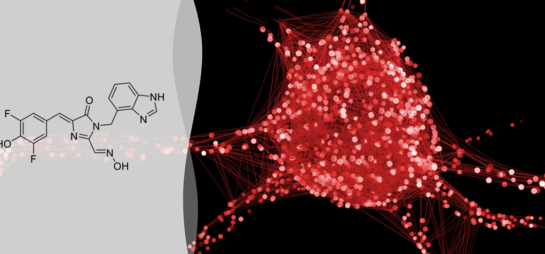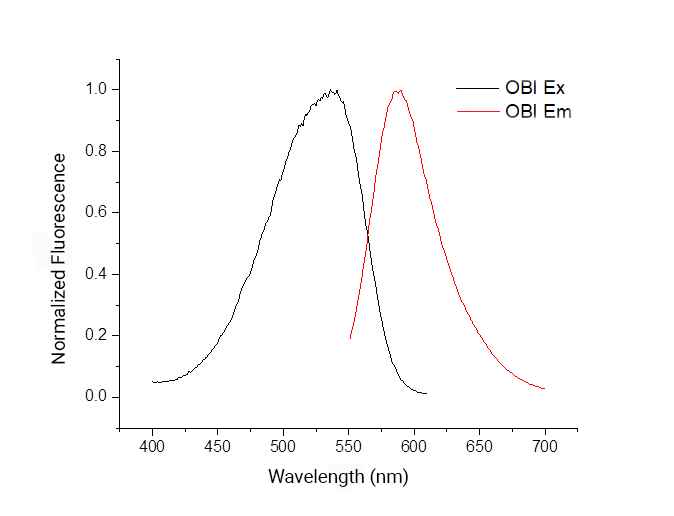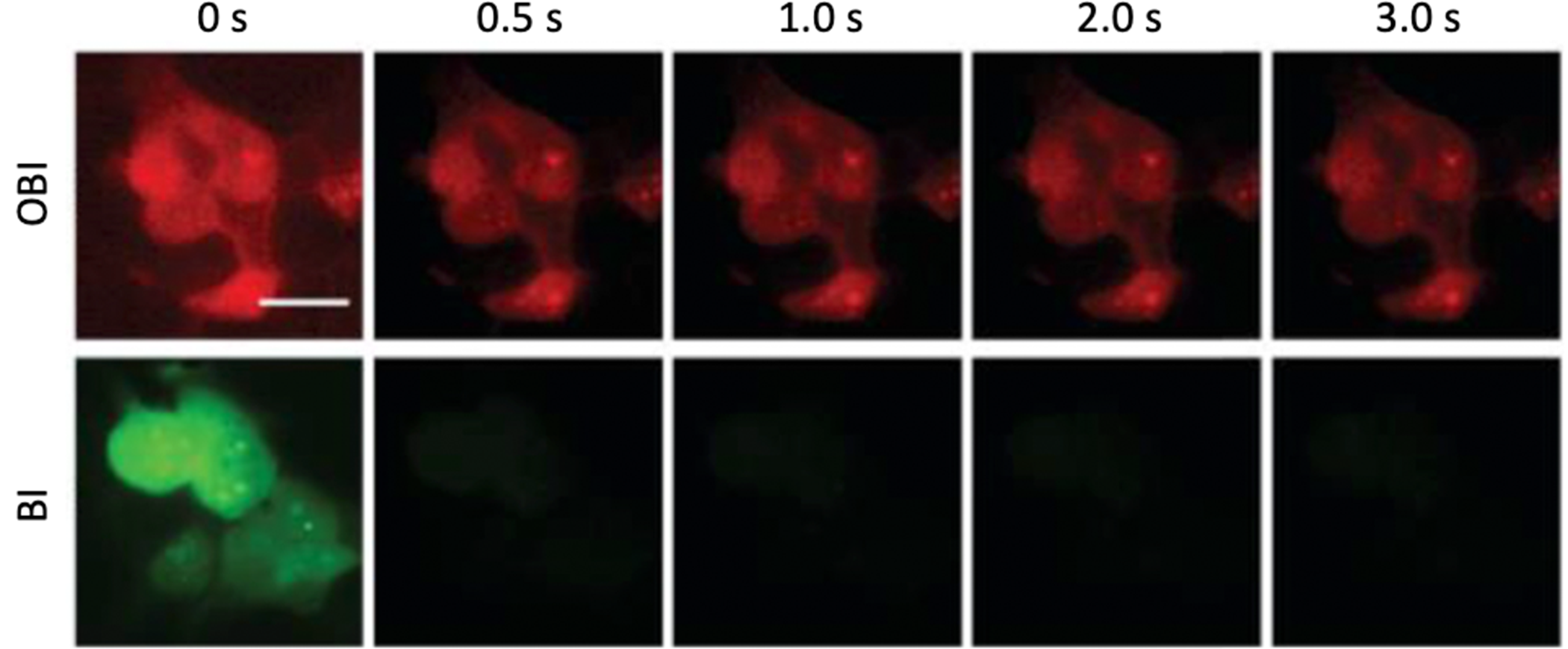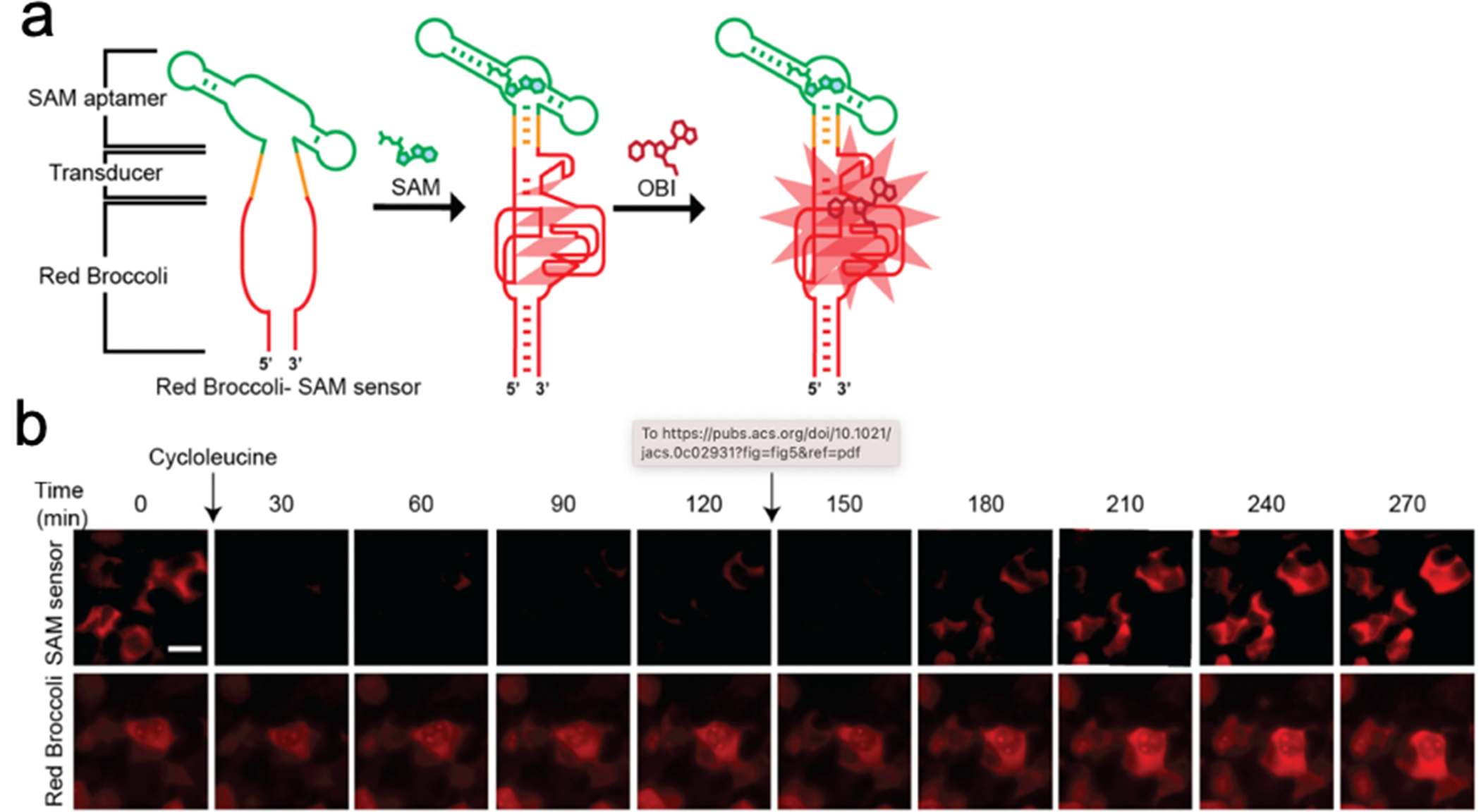Products

OBI
Information

3,5-difluoro-4-hydroxybenzylidene-imidazolinone-2-oxime-1-benzoimidazole (OBI)
MOLECULAR FORMULA:
C19H13F2N5O3
MOLECULAR WEIGHT:
397.34
CAS NAME/NUMBER:
Fluorescence Spectra

Absorption and fluorescence emission spectra of RedBroccoliTM/OBI in pH 7.4 buffer.
PRESENTATION: Lyophilized dye
QUALITY ASSURANCE: Products are analyzed by 1H NMR and LC-MS and provided at purity of >95% by HPLC.
USAGE STATEMENT: This product is intended for research use only and are not to be used for any other purpose, which includes but is not limited to, unauthorized commercial uses, in vitro diagnostic uses, ex vivo or in vivo therapeutic uses or any type of consumption or application to humans or animals. Due to the highly specific nature of fluorophores and aptamers, we cannot predict or be held responsible with respect to how LucernaTM products will behave in its customers’ systems. Researchers using LucernaTM products should conduct optimization studies to achieve the optimal result possible for their intended application.
Data

Figure 1. Red BroccoliTM-OBI complex exhibits increased photostability in cells and in vitro. In-cell photostability of Red BroccoliTM-fluorophores (OBI versus BI, 20 µM each) was assessed by continuous illumination of Red BroccoliTM-expressing cells. Red BroccoliTM-OBI maintained >75% of its red fluorescence for over 10 s, while Red BroccoliTM-BI lost ~50% of its green fluorescence within ~0.2 s. Scale bar, 10 µm.

Figure 2. The enhanced cellular stability of OBI enables imaging of endogenous SAM dynamics in mammalian cells using a Red BroccoliTM-based SAM biosensor. (a) A schematic diagram of the SAM sensor used in this experiment. (b) HEK293T cells expressing either the Red BroccoliTM-based SAM sensor (top) or Red BroccoliTM alone (bottom) were imaged with 10 µM OBI. Sensor-expressing cells treated with 50 mM cycloleucine at 0 min to block SAM biosynthesis exhibited rapidly decreases in cellular fluorescence. After 120 min, the media was replaced with cycloleucine-free media (“Wash out”) and fluorescence recovered to baseline levels over time. Cells expressing only Red BroccoliTM maintained consistent red fluorescence over time. Scale bar, 20 µm.

Figure 3. BI and OBI are “plug-and-play” fluorophores for BroccoliTM and Red BroccoliTM. HEK293T cells expressing Red Broccoli, Broccoli, or control RNA were incubated with 10 µM OBI (a-c) or BI (d-f). OBI exhibited red fluorescence in both Red Broccoli- and Broccoli-expressing cells and BI exhibited green fluorescence in both Red Broccoli- and Broccoli-expressing cells. But no fluorescence was seen in control RNA-expressing cells with either fluorophore. Cell nucleus was labeled with Hoechst-33342 stain (blue) and imaged with DAPI and a FITC filter cube for BI or TRITC filter cube for OBI. Scale bar, 10 µm.
Reference
Imaging intracellular S-adenosyl methionine dynamics in living mammalian cells with a genetically encoded red fluorescent RNA-based sensors. Li X, Mo L, Litke JL, Dey SK, Suter SR, Jaffrey SR. J Am Chem Soc. 2020 Aug 19;142(33): 14117-14124.